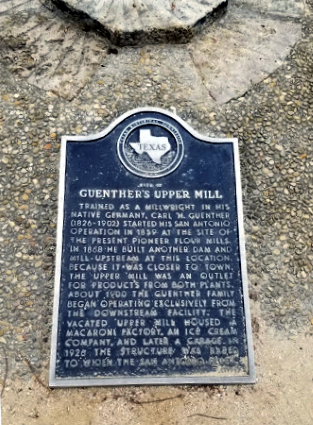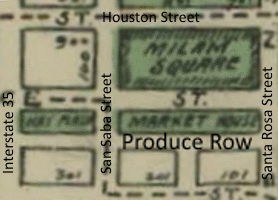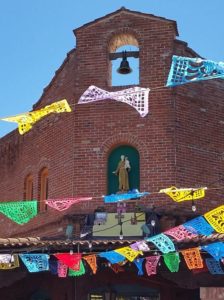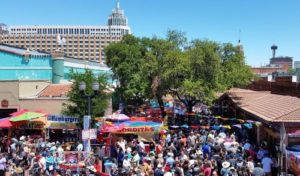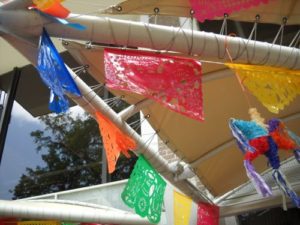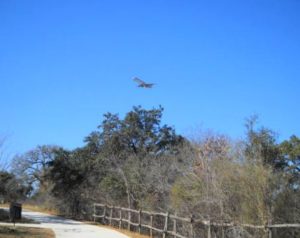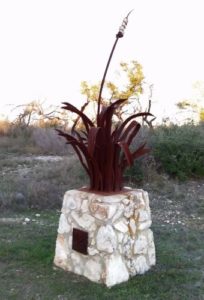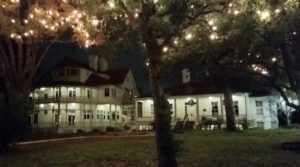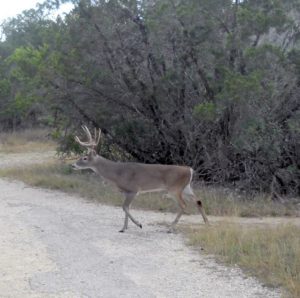It’s funny, I have had such a terrible case of writers block lately but I also haven’t been thinking much about travel or anything like it for a while. Once upon a time I was thinking about how one of the things I wanted to do with this space was give tours of the San Antonio Area.
It just hit me as I’m walking down the Riverwalk and am almost under the Cesar Chavez bridge, that I could narrate my walks on the Riverwalk. It would give me some new content and also a little glimpse into San Antonio and its history.
I am almost at Cesar Chavez and am passing a transmission antenna for I believe it’s a radio station but this location is where the first Spanish language television station in the country came from. KWEX-TV was the home of the Univision Spanish-language network.
I enjoy pointing out to people by the way that the “red” stripes on those antennas are actually orange. I was very surprised when I started working in broadcasting way back in the Jurassic era to find that out. At first, I thought it was a mistake on the FCC paperwork because they sure look red when compared with blue sky, but when you get closer, you realize that they are orange.
I just crossed under the Cesar Chavez bridge. Now we are officially in the King William district. Back in the 1800s Prince Karl of Solms-Braunfels brought a bunch of German settlers to Texas. They settled out where New Braunfels is now and they set up farms. Some became very wealthy and they moved into the city of San Antonio and built themselves mansions. This area was originally called “Koenig Wilhelm” after about King William of Prussia.
I saw a policeman riding a motorcycle down the other side of the Riverwalk. I don’t know what that’s about. He didn’t have his lights on or anything.
Later some bicyclists who were listening to music went down that side and I can’t understand what my version of Dragon Anywhere picked up there. It came out as “But I just saw you were here right now.” I don’t even know.
As I pass under Arsenal Street, this is a nice place to walk in the fall because there’s, like, a lot of red oaks and a lot of cypresses and stuff and in the fall, they lose their leaves and if you time it just right, there’ll be leaves on the sidewalk and you can shuffle through them a lot like I’m back home in Chicago.
Okay. So back to King William. When World War I came and suddenly the Germans were the enemy so they temporarily named King William Street as Pershing Street and after the war they restored the name King William, but for whatever reason, they translated it, rather than
Most of the German settlers were Catholic and they got upset with the fact that San Fernando Cathedral was, well, I guess it might have just been a parish church at the time, was so heavily Hispanic, so they got their own German Catholic Church. This is St. Joseph’s, over by what used to be the Joskes and then was the Dillards at the Rivercenter mall. And now I’m not sure what is in there now.* I’ll have to go and see what in there now. It’s been a while.
Anyway the deal that they struck they would never sell the land the church was built on, so as the Joskes wanted to expand, they are had to build around the church on three sides. The people who celebrated mass at that church lived down here in the King William district.
Right now I am across the river from the headquarters for the HEB grocery chain which was normally probably talk about that another time.
Another thing that a lot of families did down here was milling. I’m passing right through what used to be Gunther’s upper mill I took a picture of the historical marker. I should post it when I get home and post this. I’m getting a little winded narrating and walking at the same time. Also my purse is kind of heavy. It has a big 20 ounces water bottle and the extra charging battery for my phone.
I was rereading some of things I wrote and I may have to edit this quite a bit because I got something about “awaiting an actual statement.” I don’t know what I could have been saying that Dragon Anywhere would interpret as “awaiting an actual statement.”
I’m going to post this and then start working on what “Listener Genzyme” means. I might post the next chunk for tomorrow, it might take me a little longer than that to sort this next section out.
Today’s Gratuitous Amazon Link is The Winterbourne Home for Vengeance and Valor. Amazing book, not crazy about the title. The Winterbourne Home for Vengeance and Valor is the tale of April, who has one prized possession, a key with a crest on it. A crest that she sees on objects belonging to the Winterbourne family when she is at the art museum on a field trip. Her key is somehow connected to the Winterbourne family, but how?
*I do know that there’s an H&M in that building now, but I don’t think that takes up the entire space. Let’s go be the oldest person in an H&M! That sounds like fun!

